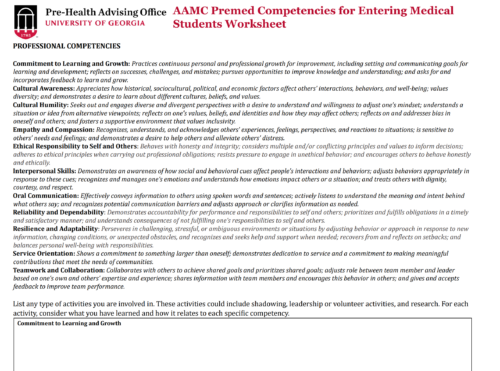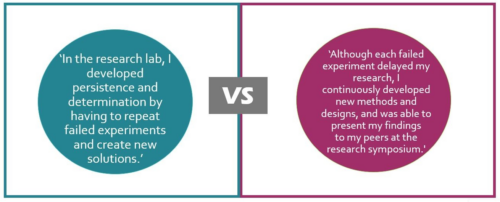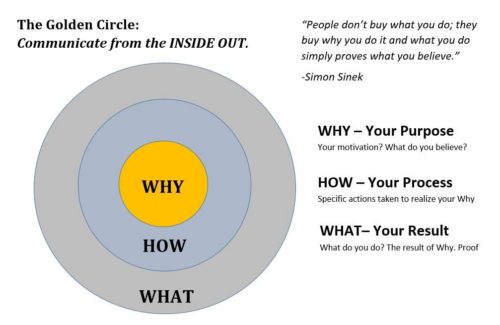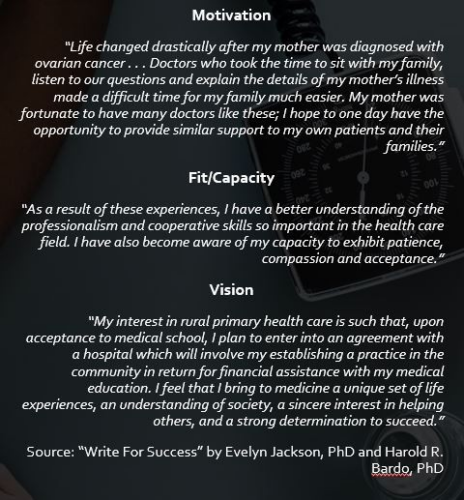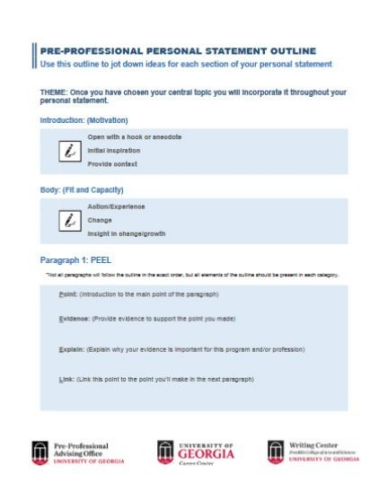The personal statement is a narrative that allows you to tell the admissions committee more about who you are using a central theme or thesis.
It is an opportunity to set yourself apart from other applicants and allows the reader to get to know you beyond your grades, test scores, and resume.
- Adds a “human element”
- Explains motivation / characteristics
- Describes experiences that have shaped your goals
- Generates interest in meeting you
Before you begin your personal statement, you need to familiarize yourself with the personal statement parameters specified by your application.
- Character Limitations – AMCAS and AACOMAS 5,300 characters. AADSAS, OptomCAS, OTCAS, and PTCAS 4,500 characters. CASPA 5,000 characters.
- Formatting – The personal statement text fields of most applications have limited (if any) formatting options. This means you can’t bold, underline, or italicize text. We recommend writing your personal statement in a plain text document.
- Specific Prompt – Your application will have a specific prompt around which you should orient your personal statement. Make sure that your statement adequately addresses the prompt. Be sure to verify the prompt for your application cycle, as it may change each year.
Once you know the parameters, you can begin brainstorming and drafting your personal statement.

